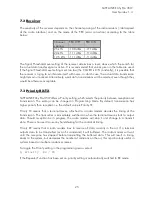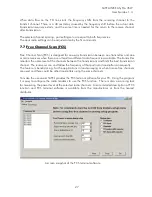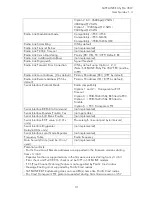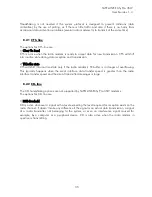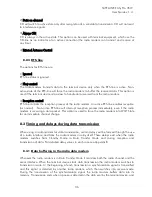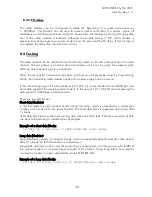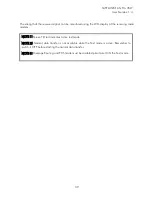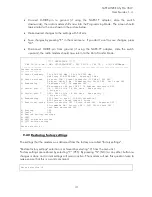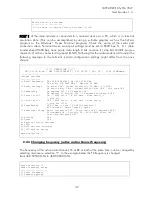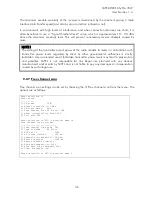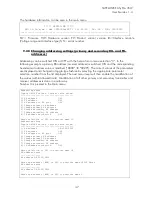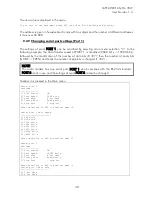
SATELLINE-EASy Pro 35W
User Guide v.1.4
34
8
TRANSPARENT DATA TRANSMISSION
8.1
Serial interface, data format
The SATELLINE-EASy Pro 35W serial interface uses an asynchronous data format. No external
synchronising signal is needed, since necessary timing information is acquired from the start and
stop bits transmitted before and after each data field bits (byte).
The data transfer speed of the serial interfaces can be set to 300, 600, 1200, 2400, 4800,
9600, 19200 or 38400 bps (bits per second). The length of the data field must be 7, 8 or 9 bits.
When using a data field length of 7 or 8 bits, a parity bit may also be used.
Example: With an 8-bit data character length and taking, for example, a decimal value of ”204”,
(which corresponds to a binary value of ”11001100”) and with a start bit value of ”0”, parity bit
set to either “NO” (NONE), ”0” or ”1” and with a stop bit value of ”1”, the possible
combinations are listed in the table below:
If the settings of data speed, character length, parity or the number of stop bits differ between the
radio modem and the terminal, errors will be introduced into the transferred data. The serial port
settings of each individual radio modem in a system can all be different apart from the data
length setting (7, 8 or 9 bits), which must always be the same in each individual radio data
modem. In other words, the serial port used, the data transfer speed, parity and number of stop
bits; can be different in different parts of a same system. This is especially useful where one part of
the system uses an RS-485 serial port and another part uses the RS-232 serial port. In other
words, radio modems may also be utilised as serial port converters in addition to the more
common role of wireless data transfer. The serial port settings can be changed in the
Programming Mode
.
Serial interface settings of the modem and terminal device connected to it must match.
8.2
Handshake lines
When using the RS-232 serial interface, handshake signals can be used to control data transfer.
Handshake signals are used, for example, by the radio modem to inform the terminal that the
radio channel is busy, and that it cannot initiate transmission. The terminal can also control the
radio modem via RTS-line.
Line
Direction
CTS
To terminal
RTS
To modem
CD
To terminal
A common way of using handshaking signals is to monitor the CTS-line and ignore the others.
Usually the terminal is fast enough to handle the data received by the radio modem, so the use of
RTS-line is not necessary.






